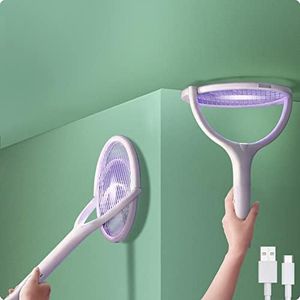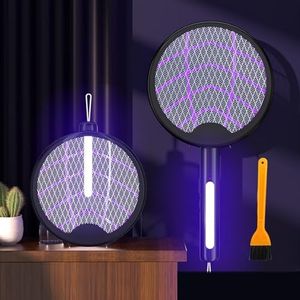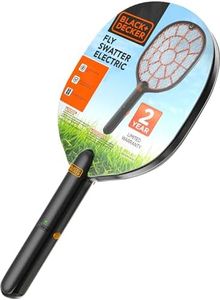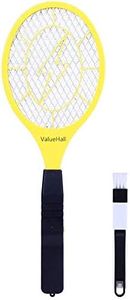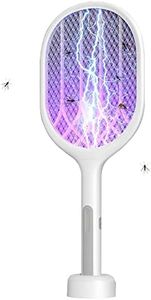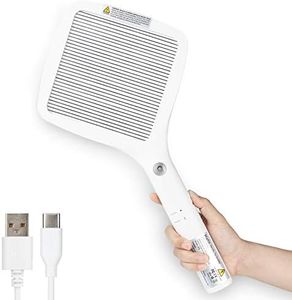We Use CookiesWe use cookies to enhance the security, performance,
functionality and for analytical and promotional activities. By continuing to browse this site you
are agreeing to our privacy policy
10 Best Bug Zapper Rackets
From leading brands and best sellers available on the web.Buying Guide for the Best Bug Zapper Rackets
Choosing the best bug-zapper racket comes down to understanding your specific needs, whether you're dealing with occasional mosquitoes indoors or persistent flying insects outdoors. Consider where and how often you'll use the racket, if children will be around, and how comfortable you are handling devices like this. Keeping your usage and preferences in mind will help you pick the right balance of features and practicality.VoltageVoltage, measured in volts (V), determines the strength of the shock the racket delivers to insects. Higher voltage means a quicker and more effective kill, while lower voltage may require more contact. Bug-zapper rackets generally range from about 500 volts to several thousand volts. Lower voltage (under 1000V) is better suited for indoor use and smaller bugs, while mid to high voltage (2000V and up) is more effective for aggressive outdoor use or larger insects. If you are mainly combating mosquitoes and houseflies indoors, lower voltage is enough and generally safer. For tougher or more frequent outdoor situations, higher voltage may be preferable.
Safety FeaturesSafety features help prevent accidental shocks and injuries—important if children or pets might be handled nearby. Common features include a mesh grid to prevent your fingers from touching the active part, safety switches or double activation buttons, and indicator lights. If safety is a top concern, look for models with multi-layered grids and child-proof switches. If you'll only use it yourself and feel confident with electrical devices, basic safety features might suffice.
Power SourceThe power source refers to how the racket is energized—commonly either replaceable batteries or built-in rechargeable batteries. Replaceable batteries are straightforward and can be swapped when needed, while rechargeable models usually have built-in lithium-ion batteries charged via USB or wall outlets. If you need portability and don't want to worry about charging, battery-powered models are convenient. If you use the zapper frequently or want to save on buying new batteries, a rechargeable model might be a better fit.
Size and WeightThe size and weight of a bug-zapper racket influence comfort and effectiveness, especially during extended use. Lighter, smaller models are easier to maneuver, making them great for kids or people with less hand strength. Larger, heavier rackets may cover more area with one swing and can be more effective for larger spaces or outdoor use, but may feel tiring over time. Choose a size and weight that you'll be comfortable holding and swinging for multiple minutes, based on your own strength and the area to be covered.
DurabilityDurability is about how well the racket can withstand drops, moisture, and repeated use. Some models are made of sturdy plastics or have reinforced handles for heavy-duty use. If you anticipate only light, infrequent use indoors, basic durability may be enough. For regular outdoor use, pets, kids, or the risk of dropping it, prioritize more rugged and water-resistant designs.
Ease of CleaningEase of cleaning refers to how simple it is to remove bug remains from the racket's mesh or frame. Some designs have wide grids or detachable heads for quicker cleaning, while others may trap remains in hard-to-reach places. If you plan to use the racket heavily, or dislike dealing with cleanup, look for easy-to-clean design elements.

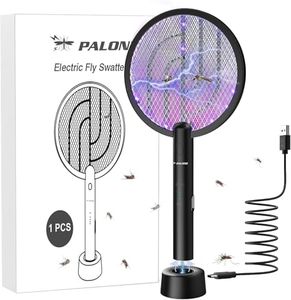
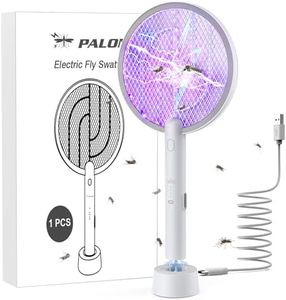
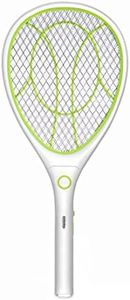
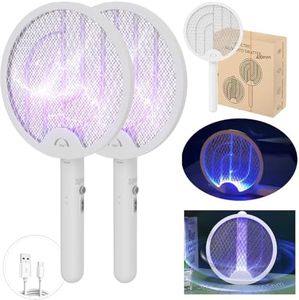
![Electric Swatter [Set of 2] Handheld Bug Zapper Racket for Indoor/Outdoor - 4000 Volt Swatter - Instant Bug & Mosquito Killer with Attractant LED Light - USB Rechargeable Portable Zapper.](https://images-proxy.bestreviews.guide/TVCJfZGIWqwGuaixn2dpCwzYDYI=/0x300/https://m.media-amazon.com/images/I/51MALYRaKbL._AC_CX679_.jpg)

